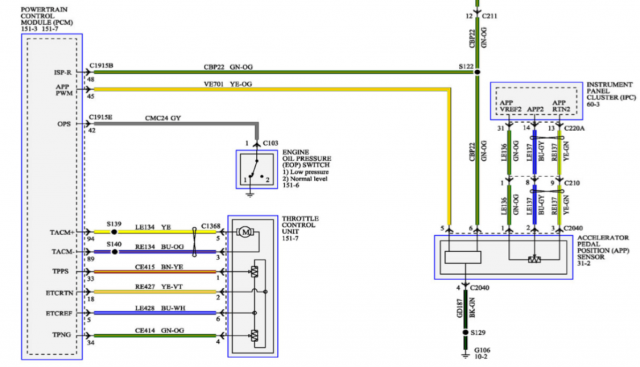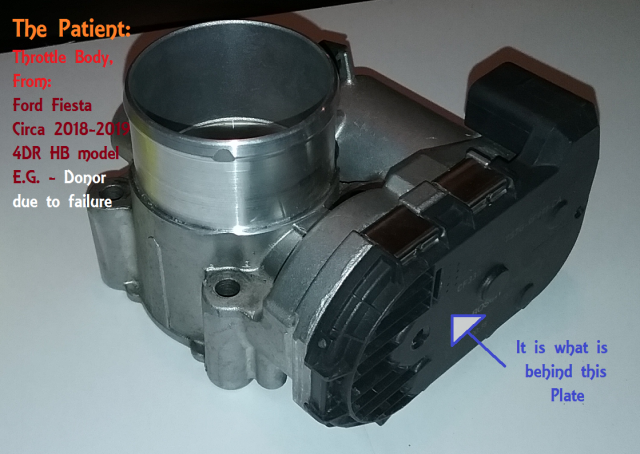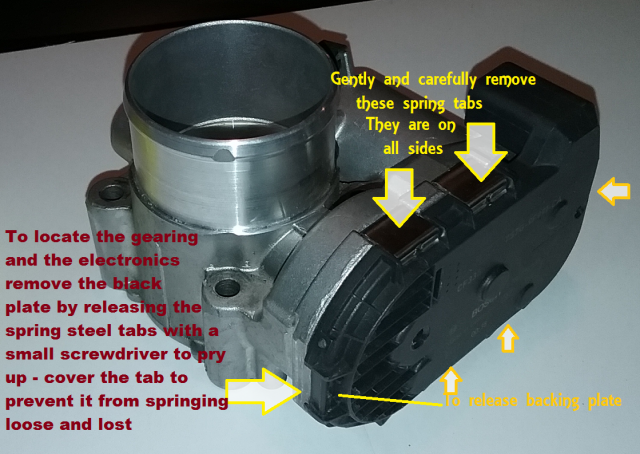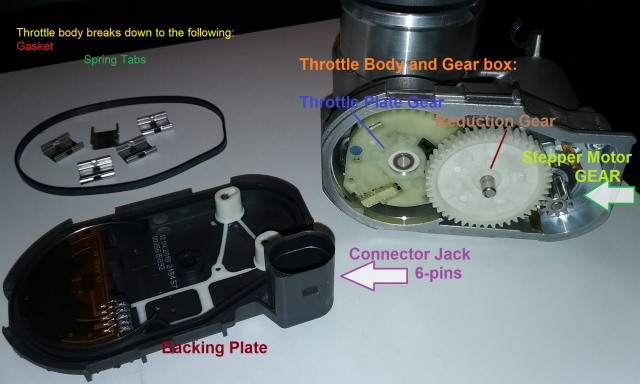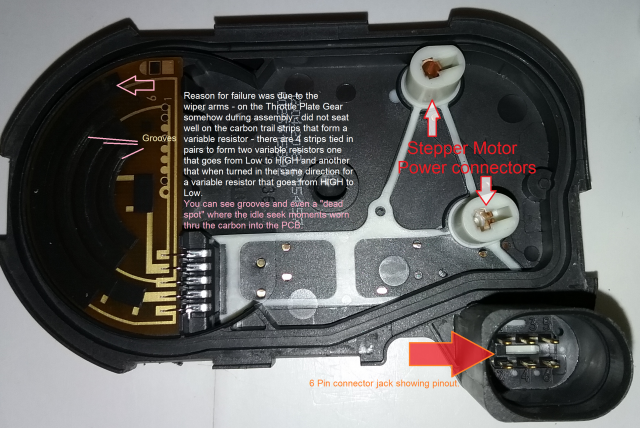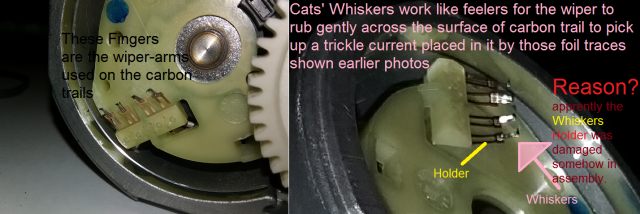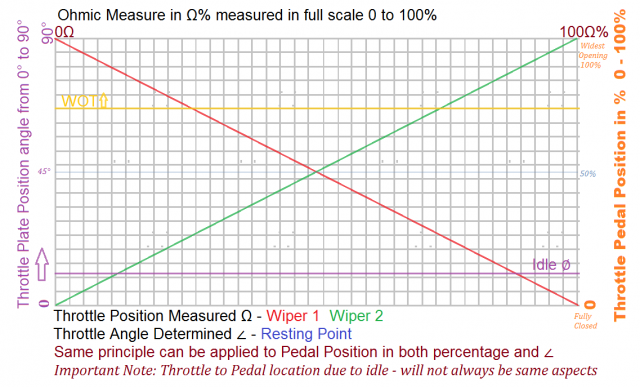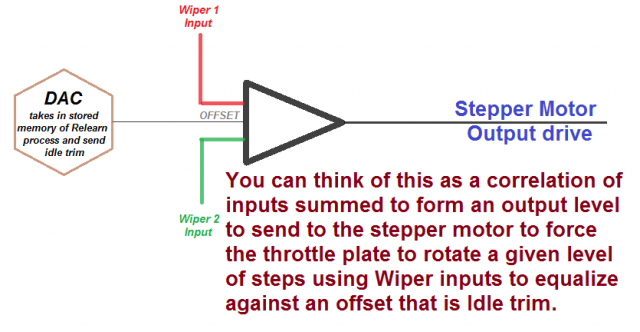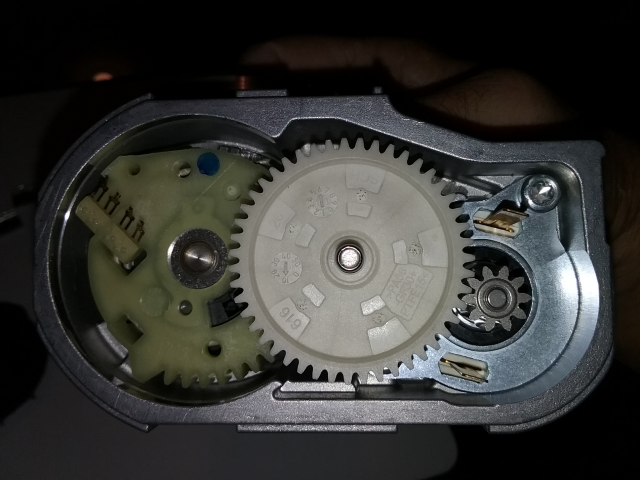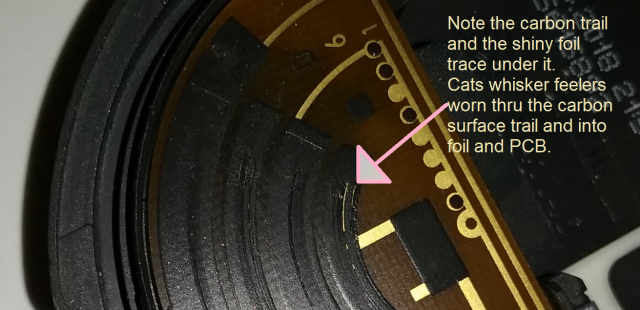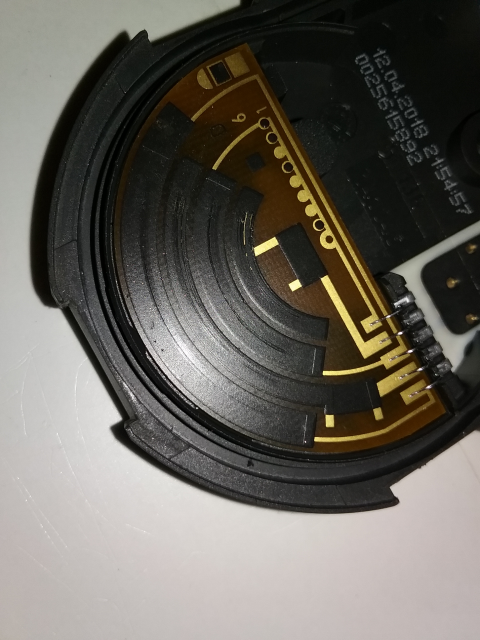The throttle body - it's condition needs to be inspected - does not always mean replacement.
The Throttle Body connects itself to the PCM - so does the Throttle pedal - but they don't directly connect, he needs to check to make sure that a voltage is getting to it, and the ground from it - is working - back to the battery Negative.
He needs to verify that Ground on the Throttle is also the SAME ground the Pedal uses - an ohmic variance above 1 ohm is suspect then to be a faulty connection or intermittent
Ground connection.
Same applies to finding a
voltage in which to power both devices - needs to be close to the same voltages measured across to their respective ground terminals - at their connectors
They are not infallible though.
The Logic board in them is pretty simple - and the motor itself uses a stepper design - so you don't want to put your finger in the throttle vane - when its' operating - you may not get it back (pinch point).
The gearing it uses from the stepper motor is unique - a reduction of a 360-degree rotation motor to a 90-degree plane - that reduction is 4:1 - so the logic motor itself has a wide level of rotation - and it only has to turn so many degrees or steps - to open the throttle from the rest to the idle. So, it actually has a rather wide angle to turn to make Idle speed open.
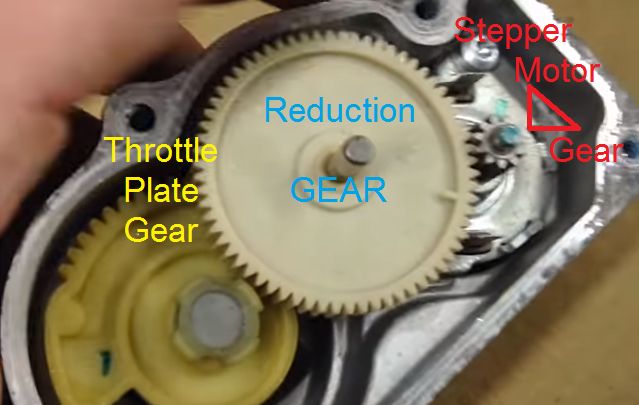
In the above screen grab - the throttle place "location" is determined by the
that 4-vane cross in its center. -
using a Hall-Effect device (magnetic sensor)
- others have a carbon trail using high to low and low to high ohmic measure
- that where they meet, is considered the angle the throttle plate is at.
To me this has low mileage - so the throttle body and its' wiring should be checked - it's exposed to whatever in the engines' bay so the harness it uses can get abraded by debris.
Actuator circuit A - is the stepper motor controller - but to register the motion, requires it to see the value of the throttle by it's location - so if the gears are showing wear or the intake needs cleaning - this doesn't always set this code - so to me thing may indicate internal issues - not just a simple range issue.
The "limp mode" is a clue.
Also these gears are not perfect, they do break - thru a process of icing or gunk plugging the path the plate takes.
Icing is a condition that used to happen with carburetor models - that the air and fuel with the vacuum pressure - and high humidity with low dewpoints - the bore of the throttle can form ice - preventing the plate from returning to its stop point or in the gunk situation it can "glue" the plate shut, and it can't move. Both can occur in damp conditions above freezing - with the icing condition being the least likely due to required altitude and icing conditions - but it's not impossible - the gunk one seems more plausible.
A link to the
Carburetor Icing issue can be found here.
Today's fuels are using more "Ethanol" based for fuel - but it doesn't have what Gasoline does, a lubricity - it's why E85 vehicles use special seals that don't let the aggressive behaviors of alcohols like Ethanol and Methanol - eat away at your investments and ruin your day.
To help you further when something like this happens again, spend the time with this series of steps to help you re-set the throttle or at least get a grip on corrected codes that do get set.
What you're going to perform is a throttle "warm" reset so you can at least be on your way.
The problem sounds like the gears in the throttle assembly slipped a position of gear (a cog) affecting where the stepper motor would stop at once it thought the throttle was closed - or closed sooner than expected - which sets that kind of code. Actuator A is one circuit you can think of that "Drives the motor to this position" once the throttle is released, another actuator and a return spring then work to pull the plate back to the original position of idle - but in the meantime the stepper motor is also sending information about where it's angle of rotation (the known last reset
important) is, and the system tries to put it there.
If the gearing slipped a cog (most likely) it can lose aspect of where the stepper motor is, and the throttle angle while driving - which then the system will see this as a logic failure and place it in limp mode until one of two things - the throttle and stepper angles are figured out - or a complete reset and or relearn occurs. You can't do both when the engine is warm, but you can clear the code if you pull the battery cable and using some method to short out the positive to negative cables - but not at the battery.
You just have to do this in a parking lot somewhere out of the way of traffic, so you have time to reset the cars lost aspects.
So, by pulling and shorting the cables (not on the battery) together - the systems keep alive memory can be drained - takes about 10-minutes and then the cables get reattached. Get inside the car and holding the throttle and brake down - and just turn the key to ON as if the engines been running - wait for all the lights including ABS and Air-Bag symbols to wink out - then turn the key to START to start the car - keep your foot on the brake, and let the engine crank - it won't start - it will take over once it's sees the throttle is getting close to idle position - by you backing off the throttle while it cranks.
The car is designed to take over the throttle position when it's started, it can't do this until you release the throttle. As you step off the throttle - that stepper motor will then rotate from WOT (Wide Open Throttle) back to closed as you are backing off the throttle to the idle position, the system can then learn the throttle angle - so it can learn "quickly" where it can safely take over when you back off or release that throttle pedal.
Car should start (keep your foot off the pedal - if it thinks it's flooded) this method should clear the Check Engine light and Orange Wrench - at least to a point where it's no longer in limp mode and you should be able to drive it while it relearns how you drive as you drive.
IF this condition continues to exist - those lights come back on - then you know the throttle body has a broken tooth gear and it can't find aspects - so it will remain in limp mode until you replace the throttle.
You then know where the condition is at - it's in the throttle body and to replace it is about $100 sometimes less.
It's a PITA to do, and it takes time - there's no mercy in pouring rain - but the limp mode is done to help you find a safe spot to get help or fix your car so you can be back safely on your way. The Resetting the condition allows you to move on, with the hopes of it not happening in a debilitating fashion it once did.
Resetting the system quickly doesn't evade a condition - it just helps to resolve a condition so you can move out of the area you're in - like heavy traffic - so you can avoid Limp Mode in drivability issues - a simple glitch can get cleared - but a chronic problem needs to be addressed IF this was a glitch - then "jot it down" in memory because the condition will more than likely occur again, So you're correct to have a tech look into this.
You sometimes have to re-force the error in order to duplicate the code to know the reason for it.
I'll have more in another post...


